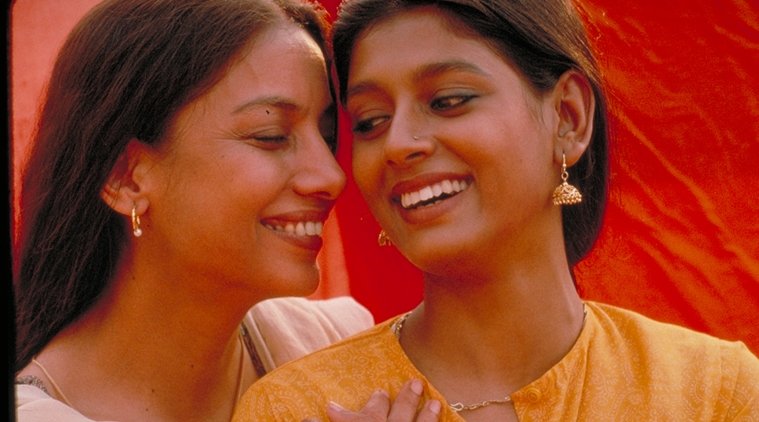
When Sridhar Rangayan directed his first film, Pink Mirror, in 2002, he was on tenterhooks. He had just launched his production house, and scrambled together resources from friends for an ambitious project: A no-holds-barred chronicle of lives of desi drag queens.
The shooting was done in just four days, and the crew went to great lengths to keep the press out. Any rumour of the film, they feared, would jeopardise the project. After all, there was still little public conversation about sexuality, the Naz Foundation petition that eventually led to the decriminalisation of adult homosexual relationships in 2009 was nascent and the only way queer people found space in the media was when they were brutally murdered.
“The film was kind of shot underground. For the first few screenings, people were scared to come. We lured them with samosas and adrak chai,” Rangayan says.
He was right. Days after the film was released, the Central Board of Film Certification banned it, citing vulgarity of content though the film had little nudity, violence or graphic language. Rangayan contends it was because the characters were unabashed about their gender and sexuality. “They expected the characters to cry and grovel,” he laughs, adding that he made three more appeals before giving up.
Fast forward to 2017. The 35-minute short film has travelled the international festival circuit, found its place in film syllabi and is currently streaming on Netflix. Rangayan’s latest film, Purple Skies, on the travails of the LGBT community, was shown on primetime Doordarshan.
Rangayan now runs south Asia’s largest annual LGBT film festival, Kashish, and has travelled to 20-plus colleges and universities to screen a variety of films – reflecting the upward trajectory of queer representation in the past two decades.
Indian popular culture is turning a corner. Led by increasingly younger audiences unshackled from the mores of cultural conservatism, films, television programmes, books and plays are making more space for LGBT artistes, featuring plotlines and characters unthinkable even a decade ago. The transformation is painstakingly slow, yes, and little has changed for the more vulnerable groups – Muslims, Dalits, transpeople or disabled people – in the community. But hope has been set afloat.
No one has experienced this change more than Sukhdeep Singh. In 2010, in a small hostel room in his engineering college, Singh started a nondescript portal. “I had just come out in a blog post and saw many unwelcome reactions that softened when I explained it to them. I then realised that there was no website or resource dedicated to LGBT people,” Singh explains over the phone.
His website, Gaylaxy Magazine, started as an online periodical that received submissions from all over India – from anonymous people in small towns, scared of themselves and their surroundings, and from young women in love, or people trying to escape abusive families. Today, his website receives more than 3,000 visitors every day and covers everything from literature to current affairs.
But in person, Singh strikes a more sobering note. “There is celebration of queer people yes, but very little money. Everyone wants to support us but no one wants to put their money on us, or walk the talk,” he says.
Some of the biggest shifts have taken place in the film and literature fraternity.
When Deepa Mehta’s Fire came out in 1996, violent protests roiled India over the depiction of romance between two female leads. There is no homosexuality in India, demonstrators declared while burning effigies in the Capital. In contrast, when Margarita With A Straw came out in 2014, it received accolades for its sensitive portrayal of queer desire in a woman with disability.
Some of this progress came at a cost. Bengali director Rituparno Ghosh, who made path-breaking films around women’s sexuality and queer lives, openly spoke about the ridicule he received in his home state for his choice of clothes or gait. In the unprecedented outpouring of tribute at his death in 2013, Bengal appeared to atone.
Bolder strides are visible in the brave new world of web series that are unfettered by formal certification and therefore teeming with stories of same-sex love – though mostly set in upper-middle class urban contexts among men.
Literature too appears to have travelled a long way from Ismat Chughtai’s Lihaaf, a thinly veiled retelling of a same-sex encounter that riled conservatives and spurred legal cases in 1942. Much of the charge was initiated in the 1980s and 90s by writers outside the Hindi-English loop in Maharashtra, Kerala, Tamil Nadu and West Bengal, helmed by plays such as Vijay Tendulkar’s Mitrachi Goshta (A Friend’s Story).
In 2000, poet Hoshang Merchant released an edited volume of gay writing termed Yaarana. The next year, Ruth Vanita and Saleem Kidwai chronicled the journey of queer literature in India. In 2002, Manju Kapoor released ‘A Married Woman’ and the next year, R Raj Rao burst on to the literary scene with his searing The Boyfriend.
Queer literature has not looked back since.
Poet Akhil Katyal, who released two books on queerness at the Jaipur Literature Festival last month, has also seen college spaces change irreversibly since his days at Delhi University. “My students now write queer slam poems at the drop of a hat…it is kosher to say LGBT now. That itself is a huge deal on the whole,” says Katyal.
Some recent literature has also focused on the link between religion and sexuality, thereby helping people who struggle to reconcile their desires with their faith, many of which disapprove of homosexuality.
This movement has been helmed by writers such as Devdutt Pattanaik, who has used examples of mythical characters such as Shikhandi to argue that Hinduism was tolerant of and even celebrated queerness.
Moreover, autobiographies by transgender women such as A Revathi and Living Smile Vidya have added to our understanding of the complexities of caste, gender and sexuality.
This post was originally published here.